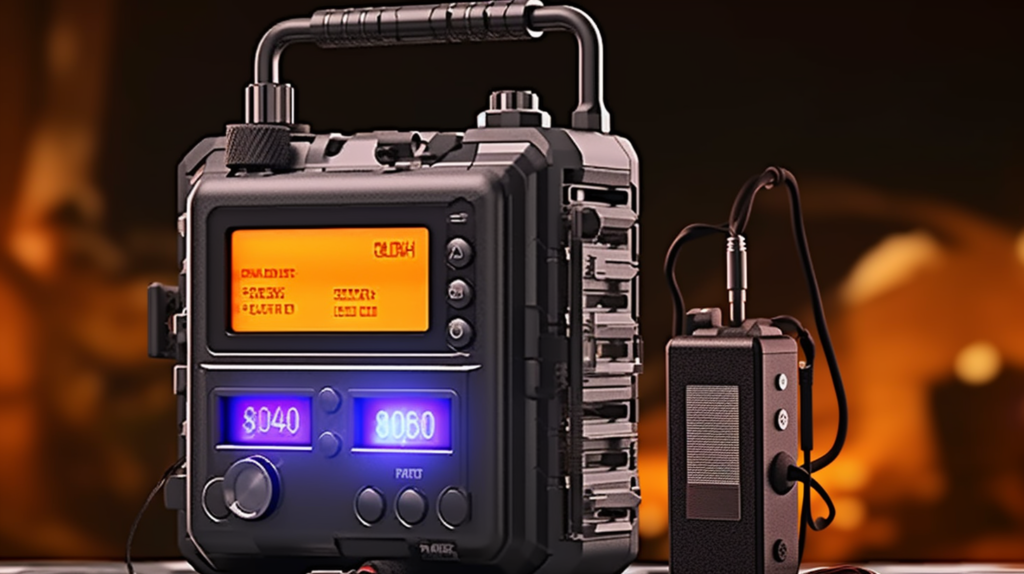From THC to THC-A: The Technology Behind Cannabis

In this article, we will be explaining the early research of this cannabinoid, as well as its current commercialization and future projections in terms of research and trends. THC-A products have been on the rise lately because they are highly potent and produce wonderful sensations, but have you ever wondered how this substance was discovered?
Discovery and Early Research
In the 1960s, Raphael Mechoulam discovered plant-derived THC and cannabidiol (CBD) by isolating and synthesizing these compounds through laboratory testing in Israel. During his research, he discovered that THC is the intoxicating agent of the plant and the major active component.
In 1965, Korte et al. were the first ones to identify the THCA compound through a hashish extract, where they determined the position of an additional carboxyl group which makes it different from THC.
Then, in 1967, Mechoulam introduced the term “cannabinoid” to define the compounds found in Cannabis Sativa, and in 1969, he identified an isomer of THCA and suggested naming it THCA-B.
Early Research of Pharmacology Effects
In the 1970s, it was discovered that THC-A was decarboxylated to THC when smoked, however, when it was taken by mouth it didn’t decompose. During that time, THCA produced the same pharmacological effects as THC when smoked.
It’s important to note that the doses used to measure the effects of THC were low, generally 5mg/kg, and they determined it produced changes in behavior and body temperature.
In another study carried out in the 1970s, they evaluated the effects of a 20mg dose of THC and determined it produced several subjective effects such as dizziness, weirdness, sleepiness, “high”, cognitive impairment, and visual changes. In the physiological aspect, they showed an increased pulse rate and a small drop in blood pressure.
Challenges Limiting Research
Mechoulam determined that through decarboxylation, both THCA and THCA-B convert into THC in his research. Korte et al., on the other hand, determined it was rapidly decomposed by light and heat.
The research on this compound has been limited due to its instability, as decarboxylation takes place rapidly and thus it’s highly difficult to obtain a pure sample that can be used for analysis.
Rediscovery of Interest in THC-A
Even though THC-A was discovered in the 60s, it didn’t reach peak popularity until the 90s, as there was a new interest in the compound due to its potential therapeutic effects.
Many scientists started to carry out research on the substance and its alleged benefits, as well as to develop new methods for its isolation.
Commercialization

The passing of the 2018 Farm Bill made a big difference in the commercialization of hemp, and thus THCA. In 2014, hemp cultivation was only allowed for research purposes, but in 2018, hemp production was federally legal.
So, even though THCA was known since the 60s and widely studied in the ’90s and early 2000s, it started to be sold commercially in 2018 in the USA and, in 2020, its popularity widely increased, as many companies started to launch more THCA selections to cater to the market needs.
The first products were the THCA crystals, and then the market started to welcome a vast diversity, with flowers being the most popular as they have a higher content of THC and thus produce powerful effects.
Current Commercial Applications and Products Containing THC-A
Nowadays, THC-A can be found in a variety of products, made with several strains. It’s possible to purchase flowers, blunts, vapes, gummies and more. People can consume the substance and enjoy the feelings and effects it produces.
When it comes to the commercialization of THCA, businesses are taking advantage of a legal loophole, as the 2018 Farm Bill allows the distribution of hemp-derived products with less than 0.3% THC, but it doesn’t mention THCA explicitly. Nonetheless, some states ban any cannabis product, including THCA.
Future Research and Trends
Currently, there has been research done on the potential wellness benefits of THCA and its clinical applications. Nonetheless, it raises a challenge due to its stability.
Its clinical interest is due to the lack of cannabimimetic effects, as it doesn’t bind to CB1 receptors in the brain, and thus doesn’t produce psychoactive effects.
Ongoing Research and Potential Benefits
According to recent research done in mice, THCA shows potent anti-inflammatory activity. It showed a reduction in inflammatory molecules like tumor necrosis factor-alpha. In another study also done in mice, it attenuated liver fibrosis and improved glucose tolerance.
It also has antiemetic and anti-nausea properties, as shown in a study conducted in 2013. In addition, it’s also believed to have neuroprotective actions that could aid in neurodegenerative diseases.
Lastly, in a 2020 study, it was proven that THCA may have anticonvulsant effects, and a clinical study showed more encouraging results in reducing the frequency and duration of seizures in children.
Methods to Improve Stability for Applications

In the 60s and 70s, it was determined that the stability of this compound could be increased in products like marijuana, hashish, and even in pharmaceutical extracts, as they produced a stabilizing effect due to their complex composition at room temperature.
In terms of extraction, the most common methods include ethanol and olive oil, as they preserve stability. Cannabis tea demonstrated short-term stability, and some studies state that THCA is more stable in herbal cannabis. In terms of shelf-life, it can be extended in hashish.
Currently, there has been research on how a stable microemulsion can stabilize THCA so it can be used for transdermal delivery. When it comes to plant growth, controlling humidity, temperature, light, and other factors improves the stability of the cannabinoid to grow THCA-rich buds.
Possible Synergies With Other Cannabinoids
Given that every cannabinoid has its particular effects and benefits, there’s ongoing research on whether it’s possible to combine them so they provide an enhanced effect. A 2020 study determined that the combination of THCA+CBDA at very low doses could work as an emetic treatment during chemotherapy.
Nonetheless, there needs to be more clinical trials to determine the efficacy of THCA combined with other cannabinoids.
Future Legal Status if Research Supports Medical Value
Since there’s current research on the therapeutic effects of THCA and its use as a nutritional supplement and externally, it’s expected that this cannabinoid will gain more acceptance, even by medical professionals.
Even though its current legal status is in a gray area if it can provide medical value. It may be introduced just as medicinal marijuana was in its time. Nonetheless, it’s necessary to be aware of what the legislation will say in terms of hemp-derived substances such as this one.
Final Conclusions
THCA is a cannabinoid of utmost interest to both scientists and consumers. Ever since its discovery, it has been subject to much research trying to determine its effects, but it wasn’t until the 90s that it sparked scientific interest.
It went from being a lesser-known substance to being highly popular for those who want to try its effects. What will the future hold for THCA? Will it gain widespread acceptance for its wellness properties or will it be completely banned due to its potential for becoming THC when heated?
This is why the continuing research of THCA and minor cannabinoids is so important, as it allows us to elucidate its benefits and potential therapeutic uses, and bring them closer to legality.






